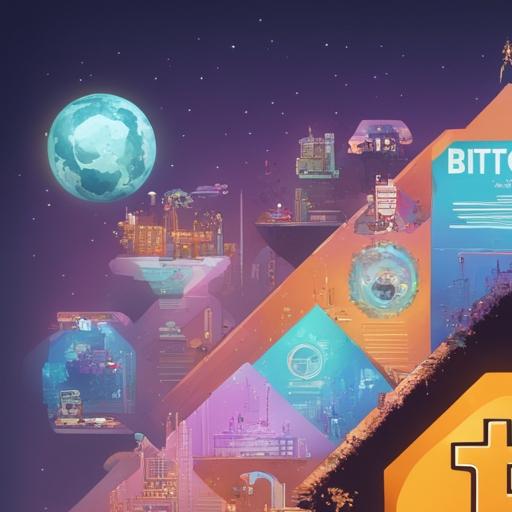In the ever-evolving world of digital technology, Non-Fungible Tokens, or NFTs, have turned into a revolutionary phenomenon, changing how we perceive ownership and value in the digital realm. For those new to the concept, NFTs are unique digital assets verified using blockchain technology, allowing them to be bought, sold, and traded like physical collectibles but with the added security and transparency of a decentralized ledger. But where did this groundbreaking concept originate?
The journey of NFTs can be traced back to a combination of several technological advancements and visionary ideas. The foundational technology, blockchain, was introduced with the advent of Bitcoin in 2009 by an unknown person or group of people using the pseudonym Satoshi Nakamoto. Blockchain’s main innovation was providing a decentralized and secure method of recording transactions, a principle that would later be adapted to create NFTs.
The first milestone specifically relevant to NFTs came in 2012-2013 with the creation of Colored Coins, which operated on the Bitcoin blockchain. Colored Coins were essentially units of Bitcoin that claimed to represent different assets. However, their functionality was quite limited, and while they laid the groundwork, they did not truly encapsulate the full potential of NFTs as we know them today.
The real innovation came with the development of Ethereum by Vitalik Buterin and his team in 2015. Ethereum’s blockchain introduced smart contracts—self-executing contracts with the terms of the agreement directly written into code. These smart contracts paved the way for creating unique, transferable digital assets, a cornerstone of NFTs.
In 2017, NFTs began catching major public attention through Ethereum’s ERC-721 standard, designed specifically for creating non-fungible tokens. This standard ensures that each token has unique information and cannot be directly replaced by another token. The launch of projects like CryptoPunks and CryptoKitties further popularized the concept. CryptoPunks, a series of 10,000 unique 24×24 pixel art characters, are often credited as the first major NFT project. On the other hand, CryptoKitties allowed users to breed and collect virtual cats, each with unique attributes governed by blockchain.
The explosion in popularity continued as NFTs started being utilized in various fields such as digital art, music, sports memorabilia, virtual real estate, and even tweets. Artists and creators saw NFTs as a new avenue to monetize their work, leading to record-breaking sales. For example, Beeple’s digital artwork titled “Everydays: The First 5000 Days” was sold for an astounding $69.3 million at a Christie’s auction in 2021.

The rise of marketplaces like OpenSea, Rarible, and Foundation further facilitated the NFT trade, making it easier for creators and collectors to engage in this burgeoning market. These platforms have democratized access to NFTs, allowing even small artists and creators to reach global audiences.
Despite their meteoric rise, NFTs have also faced criticisms and challenges. Issues like environmental concerns due to the energy-intensive nature of some blockchain technologies, questions about ownership rights, and the volatility of the NFT market have all been points of discussion and debate. However, proponents argue that advancements in technology and thoughtful regulation can address these challenges.
In conclusion, the origin story of NFTs is a narrative that includes technological innovation, visionary thinking, and a reimagining of value and ownership in the digital age. From the early days of blockchain to the creation of Ethereum’s ERC-721 standard, to their current status as digital assets traded globally, NFTs have undoubtedly carved out a significant place in the landscape of digital technology and art.
